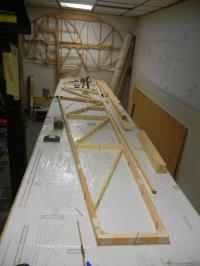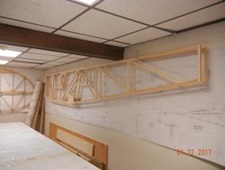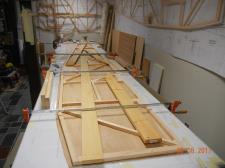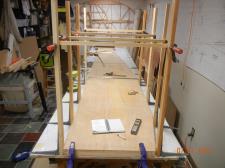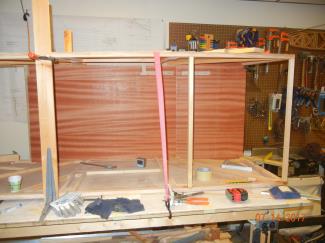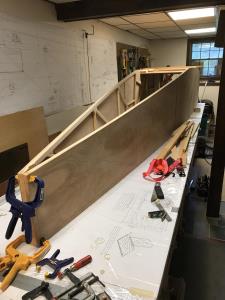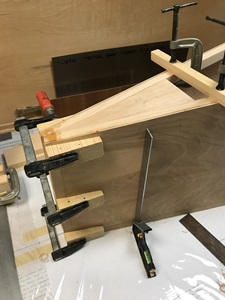Building the fuselage of this aircraft has some of the most complex but at the same time, most rewarding woodworking and construction challenges. There are many dimensions to it from the basic sides, the engine mount area, turtle deck, empennage attachment, landing gear, cockpit, instrument panel, and the list goes on. One of the best things about making the fuselage is that you actually get something that resembles an airplane - though for a while this build just resembled a crude wooden canoe. Sometimes I think I should have built the fuselage before the wings because its intricacy really helps you hone your woodworking skills.
The core structure of the fuselage is over 13 feet long so it uses much of the two 8 foot tables that have been set up. You make it using a nail jig. The structure is all sitka spruce, 1/2" x 7/8" and corner blocked at every joint. To get exact alignment I built the right and left sides on top of each other with wax paper between them at the joint locations so that the T-88 would not epoxy them together.
Each side is covered with 1/8" plywood. The picture above left shows the clamping pressure being applied from the frame downward to the plywood during gluing. Once the sides have dried they are stacked on top of each other and the forming of the structure begins. I made the scaffold-like jig on the right to allow one side of the fuselage to be suspended directly over the other so that cross members and flooring could be put in place.
Once all of the cross members and the floor are in place the fuselage sides can be joined at the rear.
There's a lot more to show so please check back for additional updates.
